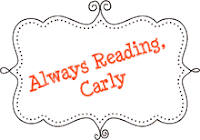Wow, Readers!
I can't believe that TBF 2010 is already over ... wasn't it great, though? Here are some pictures I took throughout the day. I'm sure I missed some awesome moments, but I tried to capture as many as I could. Be sure to leave comments with your favorite festival memories!
The Golden Flyer meets Snoopy as they await the authors.
A marching bands leads the limos carrying the TBF 2010 authors to the Shults Center.
The marching band (and the authors!) grows closer to the Shults Center.
One of the limos arrives in front of the Shults Center.
Stephanie, fearless leader of TBF, greets Coe Booth.
Marissa Doyle and Matt de la Pena are greeted by Snoopy upon arrival.
Lisa McMann high fives her fans as she walks the red carpet.
Terry Trueman, Lindsay Cibos, and Simone Elkeles arrive at the Shults Center for TBF 2010.
Simone Elkeles greets Snoopy as Martin Wilson emerges from the limo.
Holly Black and Mari Mancusi walk the red carpet.
Sarah Ockler waves to her adoring fans as Alisa Libby and James Kennedy follow.
Vivian Vande Velde arrives.
Robin Brande smiles as she prepares to walk the red carpet.
Ben Mikaelsen arrives at the Shults Center and walks the red carpet.
The crowd awaits the start of the opening panel.
Terry Trueman makes Jennifer Smith laugh during the opening panel.
The authors prepare for the lightening round of questions that made up the opening panel.
Terry Trueman signs autographs.
Fans stand in line for autographs at the end of the day.
Terry Trueman and Zeke, the stand-in mascot of TBF 2010.
Vivian Vande Velde signs autographs.
Did you know the "J.K." stands for "James Kennedy?"
Shoppers purchase books at the Barnes & Noble table set up in the gym.
A volunteer sells candy to a festival-goer at the TBF merchandise table.
So, readers, it was a great year! I can’t wait until the next one … and I’ll be posting all summer long about TBF 2011 so keep checking back.









































